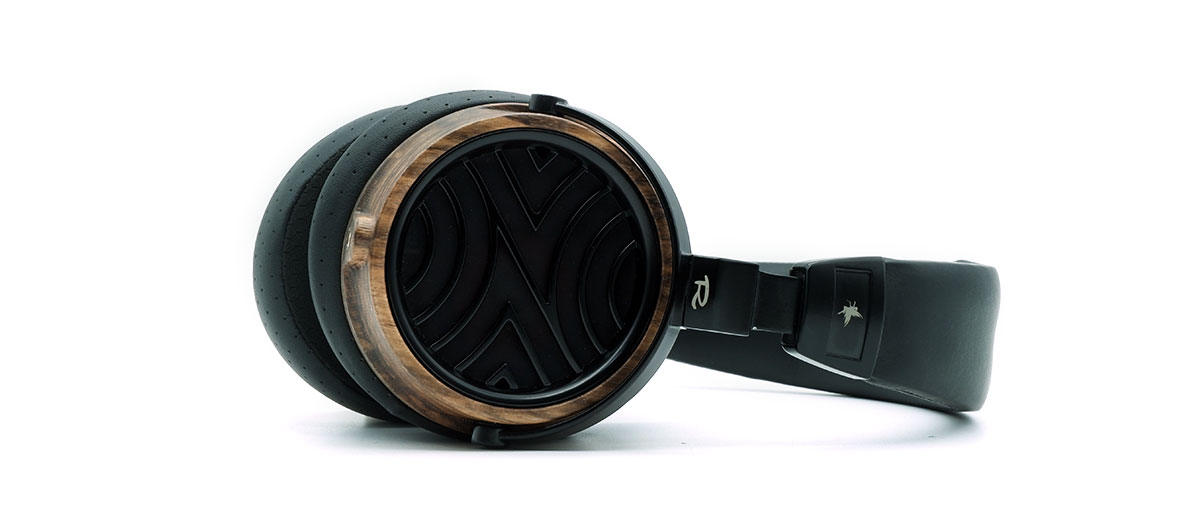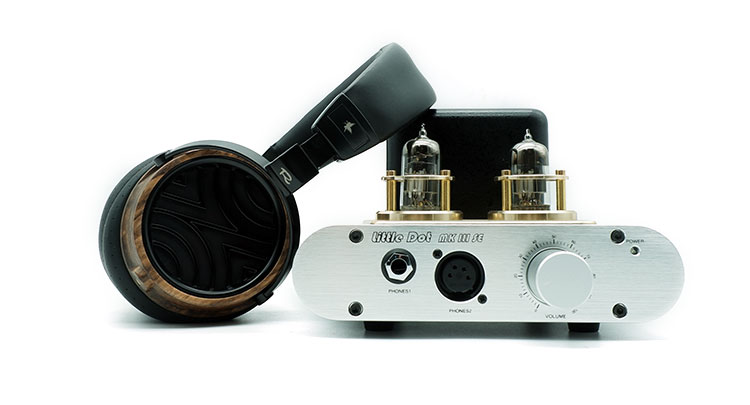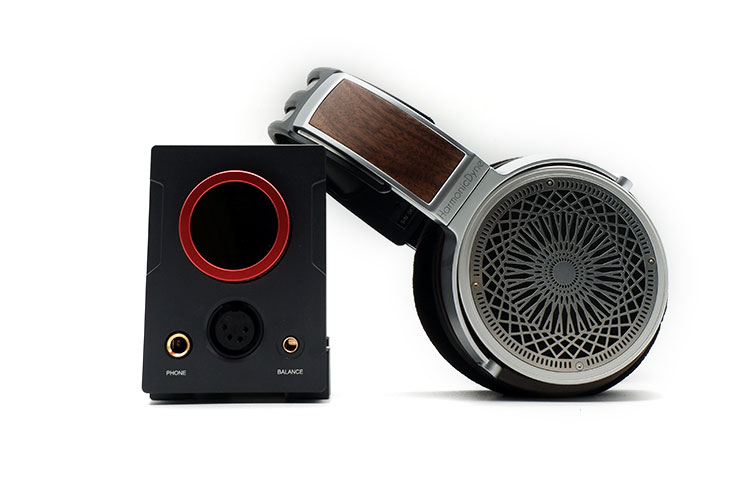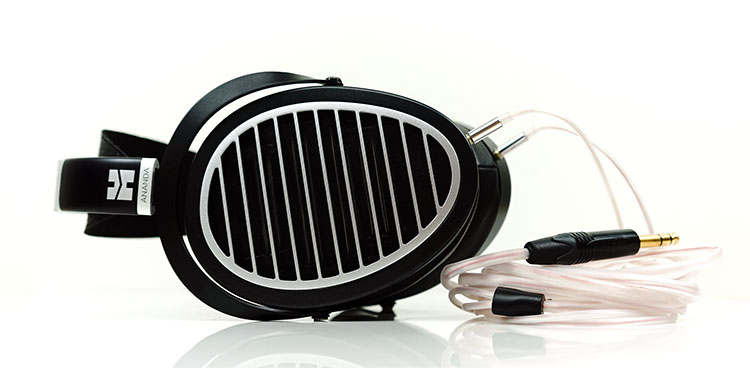Synergy
Efficiency
Being rated at an impedance of just 33Ω, and a sensitivity of 102dB/mW, the GYFU stays on the more sensitive side of the spectrum.
With most sources, it can easily be made to play loud, and it doesn’t go beyond 8 o’clock on the Little Dot Mk III SE. You also can’t reasonably go beyond 60 on the medium gain with the Burson Soloist 3X.
The GYFU also plays plenty loud with portable sources such as the Audioquest Dragonfly Red, which only needs to go to 50% to produce optimum volume. So this allows the GYFU to be versatile enough to work with various situations, including creating transportable setups centered around the GYFU.
Pairings
With the relatively neutral tonal balance of the GYFU, it plays nicely with most upstream gear. I started by pairing it with my reference desktop setup, which is composed of the Denafrips Ares II, and the Burson Soloist 3X.
This pairing worked pretty well with the GYFU, but it made the sound a bit weighty, though generally more spaced out. The lower treble frequencies also tend to be edgy and crunchy, which can be a bit too much in certain tracks.
So I swapped in Little Dot’s own MK III SE hybrid class A amplifier which is also in for review. This amplifier gave the GYFU a more even tonal balance, smoothing out the treble edginess, giving just enough forwardness while ensuring that the pairing won’t become too sharp at any time.
The mid-bass weight was also held back a bit more, so the weight didn’t seem exaggerated anymore, while the soundstage is pushed out a bit more.
Turning to my portable sources, the best pairing that I was able to find is with the iBasso DX200, which allows the GYFU to have a natural tonal balance while still having some excitement due to the zing on the lower treble region.
While this pairing allows the images to be generally accurate, there is some perceived compression in both the delineation of the images and the dynamic range.
Earpad Adjustment
According to Little Dot, the GYFU’s tonal balance can be changed by rotating the earpads 180°, and in my experience, there is some change when you rotate the earpads. I believe the balanced mode is when the cut of the earpad is oriented in front of the headphone when it is worn, while the vocal mode is at the back of the headphone.
With the GYFU in vocal mode, the vocal range is more forward, and almost shouty for my taste, but it can benefit some more subdued recordings. However, for most of my listening sessions, I used the balanced mode since it’s the safer of the 2 tonal modes.
Select Comparisons
Sennheiser HD600
$289
Technical
Both of these headphones have an open-back design, but the HD600 has a much higher impedance being rated at 300Ω, with a sensitivity of 97dB.mW. This means that the HD600 requires a lot more power to reach the same volume level as the GYFU.
In reality, when I was doing my AB tests, I always had to turn up the dial to volume match the HD600. With my Burson Soloist 3X, I always needed to increase the volume by around 18 notches on medium gain to match the volume on the 2 headphones.
Design
There are fewer metal parts on the HD600, but I believe that both headphones are equally durable. Both headphones allow for a certain level of articulation of the earcups, but the range of motion is more limited with the HD600 while still allowing it to create a perfect fit for a wide range of heads.
The earpads on the HD600 are shallower while having a larger hole for my ears, but my ears don’t touch any part of the earpads when I wear them. The HD600 has more cloth-covered parts though, like the headband itself and the earpads, which wear down more easily than leather parts.
While the cable for the HD600 is pretty common, this is only due to the longevity of the HD600 family’s design. However, the terminals on the HD600 are still less common than the 3.5mm jacks that are used on the GYFU.
Performance
With the HD600 being a classic in the headphone world, its driver configuration is a traditional single dynamic driver design. This might seem like it puts the HD600 at a disadvantage, but the single driver configuration creates an overall more even tonal balance. However, this comes at the cost of a more rolled-off sub-bass region, and a less airy top end.
When listening to the HD600, is still its greatest strength where the vocal textures are easily picked out within the mix.
However, the harmonic overtones of the midrange instruments on the HD600 are less emphasized, allowing it to have a warmer tilt both with vocalists and with midrange instruments like guitars and pianos.
With the less emphasized lower treble on the HD600, treble instruments are pushed back. While there is still texture with cymbal hits, the HD600 won’t express the level of energy as the GYFU.
The chief complaint that I hear about the HD600 is that it leans towards the more intimate side of things, but it’s less intimate on average. The difference between the most intimate image, and the most far-out image is less distinct with the HD600 though.
Overall soundstage width seems equally expansive on both headphones, but images are more delineated with the HD600.
HarmonicDyne Zeus
$350
Technical
Having an open-back design, the Zeus is equipped with a single 50mm Beryllium dynamic driver. This dynamic driver is rated at 64Ω with a sensitivity of 100dB/mW. Which makes both headphones about equal in terms of efficiency.
When I plug both headphones into my Burson Soloist 3X, I ended up needing just 5 notches more to produce the same volume when on medium gain. This leads me to believe that both headphones can work with most portable sources as well.
Design
Both headphones have some similar design cues, with both sporting some wood grain accents on the earcups, and having leather earcups.
However, Zeus’s earcups are just wood veneers, so they seem less authentic overall. Also, the open-back baffle on the Zeus is rougher around the edges literally, so it can act like a cheese grater if you’re not careful.
While both headphones have about the same sized earpads, the Zeus’ earpads are velour earpads, which can be more comfortable in warmer environments. The top of the headband is covered in leather for both headphones, but Zeus’s leather headband is stiffer.
Both headphones allow for the same degree of movement for the headband yokes, however, the Zeus’ adjustment mechanism is too soft. So the Zeus will flop around when you put them on the table, which might make it more difficult to handle at times.
The termination on both headphones is the same 3.5mm TRS connection, however, the cable that the Zeus comes with terminates in 4.4mm balanced by default.
So this might be more convenient when you would want the flexibility to use a balanced amplifier, but both headphones have 3.5mm and ¼” connections available by default.
Performance
Being named after the god of thunder, Zeus has a tasteful bass emphasis, this bass emphasis is still prominent in comparison to the GYFU. However, when it comes to the level of control over the bass, the Zeus has tighter control over the bass region, allowing it to have a more rounded bass response while being a touch smoother overall.
The midrange on the other hand is more subdued while glossing over most of the graininess that I can hear with some vocal tracks. Midrange instruments have a warmer tonal shift, making most acoustic instruments more full-bodied due to a more planted fundamental while having more controlled harmonic overtones.
With a more tamed down treble range, the Zeus is comparatively more laid back and less energetic. Cymbal hits are simply more controlled while still maintaining the ability to convey details and textures.
With both headphones having a generally extended treble range, they can lay out an equally expansive soundscape. However, dynamic range is not as pronounced with the Zeus, giving a feeling that the images are formed further out while having a more limited space to work within.
Hifiman Ananda
$699
Technical
The similarity between the 2 headphones is that they’re both have an open-back design, however, the Ananda is based on Hifiman’s planar magnetic driver technology that has a 50mm x 80mm nano-scale diaphragm. While traditional planar magnetic headphones typically require a lot of current, the Ananda is one of the less demanding planar magnetic headphones in the market.
Based on the specifications of the Ananda, it has an impedance of just 25Ω and a sensitivity of 103dB. This means that the Ananda is even easier to drive, and with my testing, the Ananda needs around 5 notches less on my Burson Soloist 3X to achieve the same volume as the GYFU.
Design
Both headphones are generous with the use of metal, where the yokes and adjustment mechanisms are made of metal, which ensures durability. The headband on the Ananda though uses a suspension-type system with a leather strap, which makes sure that there won’t be any hot spots.
However, the headband on the Ananda doesn’t allow for any articulation horizontally, which may mean that the Ananda won’t have the flexibility to fit all head shapes.
The earcups on the Ananda are tear-drop shaped, which leave ample room for ears to not touch any part of the earpads. Both headphones have hybrid earpads, but the ones on the Ananda are firmer so they can’t make as much of a perfect seal.
Terminations on both headphones are the same, and in fact, the cables for the 2 headphones are interchangeable. This makes it equally easy to find replacement cables for either headphone.
Performance
It’s common to find headphones that trace the Harman target pretty closely, and both these headphones are two such examples of that. Despite that, they don’t sound the same, with the Ananda having a less pronounced treble range. This gives Ananda a less energetic overall presentation but allows the vocal presentation to be more controlled.
Although both headphones are equally detailed in the bass, the Ananda feels less natural because of its softer attack and decay. Both headphones have an equally extended sub-bass region, but the Ananda simply feels larger while being more polite, so the weight behind each note isn’t as pronounced.
Aside from that, there is a big difference is in the imaging presentation, where the larger drivers of the Ananda produce a much grander sense of scale in terms of the size of the images that it creates. The Ananda also feels more expansive between the two headphones, while having a less layered presentation.
Our Verdict
The GYFU represents Little Dot’s debut effort into creating a full-sized headphone, and an interesting triple dynamic driver open-back design. It’s packaged in a classy wood box as it’s meant as a “gift for you” for Little Dot’s supporters, and the wood theme also takes a prominent place in the headphone’s overall aesthetic.
While the GYFU is on the smaller side of full-sized headphones, it fits nicely, and it has sensible design elements that ensure its usability and durability.
The tonal balance of the GYFU leans towards the more energetic side of the spectrum, where it adds a splash of lower treble energy to give it an overall more forward presentation. This creates a headphone that has a lot of ‘get up and go’ while having a good dynamic range that creates a layered but forward presentation.
Little Dot GYFU Technical Specifications
- Driver Configurations: 50mm Large Nanocomposite Diaphragm, 8mm High-Frequency Driver, 32mm Low-Frequency Driver
- Connector: 3.5mm
- Distortion: <0.1%@1kHz
- Impedance: 33+/-5%ohm
- Frequency Range: 15-20kHz
- Sensitivity: 102+/-3dB









